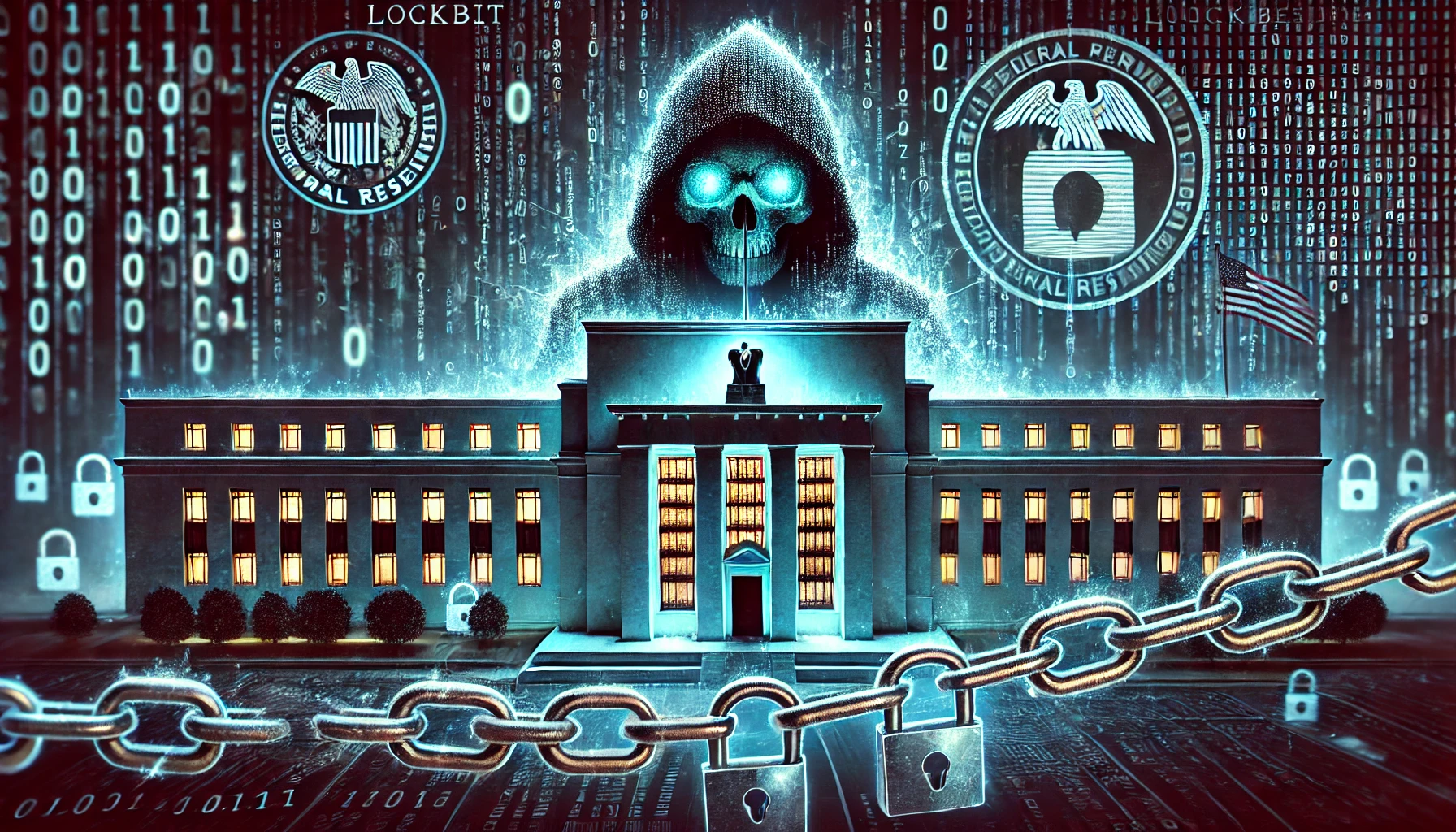ntroduction
In a shocking revelation, the LockBit ransomware gang has claimed to have breached the US Federal Reserve, stealing an astounding 33 terabytes of sensitive data. This cyber-attack, if confirmed, represents a significant threat to national security and financial stability. This article delves into the details of the breach, the history of the LockBit group, the potential implications, and the responses from various stakeholders.
The Breach: What Happened?
The LockBit ransomware group announced on their dark web blog that they had successfully infiltrated the US Federal Reserve’s systems. The group claims to have obtained a massive trove of sensitive information, which they have termed “juicy banking information.” The exact nature of the data remains undisclosed, but LockBit has hinted at possessing critical American banking secrets. The ransom deadline has been set for June 25, 2024, threatening to release the data publicly if their demands are not met.
Who is LockBit?
LockBit is a highly sophisticated ransomware group known for its aggressive tactics and high-profile targets. Established in 2019, the group has quickly risen to prominence in the cybercrime world. They utilize a ransomware-as-a-service (RaaS) model, enabling affiliates to use their ransomware tools in exchange for a share of the profits. Some notable victims of LockBit’s previous attacks include:
- Boeing: The aerospace giant faced significant disruptions when LockBit encrypted their systems.
- ICBC Bank: One of China’s largest banks, which had its operations hampered by a LockBit attack.
- Bangkok Airways: The airline suffered data breaches affecting thousands of passengers.
Despite numerous law enforcement efforts to curb their activities, including identifying and exposing their alleged leader, Dmitry Yuryevich Khoroshev, LockBit continues to operate with impunity.
Understanding Ransomware Attacks
Ransomware attacks involve malicious software designed to encrypt a victim’s data, rendering it inaccessible until a ransom is paid. These attacks can cripple organizations, leading to significant financial losses and operational disruptions. LockBit’s ransomware is particularly notorious for its speed and encryption strength, making it a formidable threat.
The Implications of the Federal Reserve Breach
The potential ramifications of this breach are vast and troubling. If the stolen data includes sensitive financial information, it could lead to:
- Financial Instability: The exposure of critical banking data could undermine confidence in the US financial system, potentially causing market disruptions.
- National Security Threats: The Federal Reserve plays a crucial role in national economic security. A breach of this magnitude could have far-reaching implications for national security.
- Legal and Regulatory Consequences: The breach may lead to stringent new regulations and legal actions aimed at improving cybersecurity defenses across the financial sector.
Government and Institutional Responses
In the wake of the breach, the US government and cybersecurity agencies are expected to take swift action. This includes:
- Investigation and Attribution: Identifying the perpetrators and understanding the breach’s scope will be a top priority.
- Strengthening Defenses: Enhancing cybersecurity measures within federal institutions to prevent future breaches.
- Public Communication: Informing the public and affected parties about the breach and potential risks.
Mitigation Strategies for Organizations
Given the increasing frequency and sophistication of ransomware attacks, organizations must adopt comprehensive cybersecurity strategies to protect themselves. Key measures include:
- Regular Backups: Ensuring data is regularly backed up and stored securely.
- Employee Training: Educating employees about phishing attacks and other common ransomware delivery methods.
- Advanced Security Solutions: Implementing advanced cybersecurity tools, such as intrusion detection systems and endpoint protection.
The Future of Cybersecurity
This incident underscores the evolving nature of cyber threats and the need for continuous adaptation in cybersecurity practices. Future strategies may involve:
- Increased Collaboration: Enhanced cooperation between government agencies, private sector organizations, and international partners to combat cybercrime.
- Innovative Technologies: Leveraging artificial intelligence and machine learning to detect and respond to threats in real-time.
- Regulatory Frameworks: Developing robust regulatory frameworks that mandate stringent cybersecurity practices across industries.
Conclusion
The alleged breach of the US Federal Reserve by LockBit is a stark reminder of the persistent and evolving threat posed by ransomware groups. As institutions and governments worldwide grapple with these challenges, the importance of robust cybersecurity measures cannot be overstated. Continuous vigilance, proactive defense strategies, and global cooperation will be key to mitigating the risks and safeguarding our digital future.
